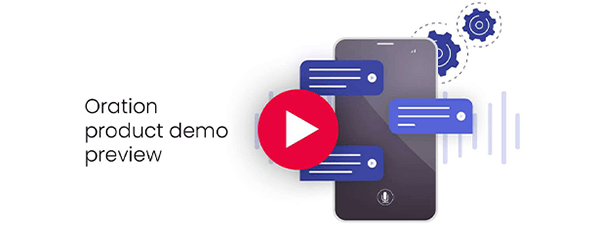A guide to IVR design best practices and how they deliver great customer experiences
With the pressures of creating cost savings ever-present in most organisations, it is no surprise that customer services often are in the firing line to get optimised, sometimes to the point where the providing of great service is even compromised.
Today however, many businesses are turning a corner, having experienced first-hand the consequences of limiting investment in customer service, such as decreasing satisfaction levels, customer loyalty and, eventually, declining revenue.
Deloitte’s Global Contact Center Survey 2017 showed that improving the customer experience (CX) was a top priority for nearly half (46%) of contact centre executives in 2017, rising from 34% in 2015. Later on, Deloitte’s 2019 survey revealed that CX had become a key business differentiator, with CX a top priority for 57% of contact centre executives – expected to rise to 67% over the following two years.
The overall shift in attitude when it comes to the importance of customer experience versus cost saving is even further emphasised by the 2019 survey. While cost control is now expected to be a high priority for only 15% of contact centre executives, meeting customer expectations (85%) and improving services (78%) are the main drivers of investment in most contact centres.
IVR design is central to CX
It goes without saying that the design of your IVR system is one of the most critical components of delivering a great customer service experience for your customers. How your IVR system works can make the difference between enraging your customers (frankly) or turning them into loyal brand advocates. In fact, although the study is now over 20 years old, research from Purdue University in the US found that 92% of consumers build their image of a company based on their experience with its call centre while the majority (63%) would stop using a company’s products or services if they had a bad experience. And unfortunately, we all know what a ‘bad’ experience can look like.
Understanding where IVRs often go wrong in the eyes of customers
Imagine a scenario where you call a company looking for assistance after doing your best to help yourself using the company’s website and digital resources. When your call is received by the IVR, you’re greeted with a series of marketing messages and information on where else to go for help and advice, other than the call centre. Already, you’ve spent time listening to information that’s of no help, and you’re feeling rather unwelcome to boot.
At the next stage of your call, you’re presented with a long list of menu options, which not only takes a few minutes to hear out, but you’ll have to listen to them over again because you can’t remember all of them by the end. At this point, some customers will abandon the call feeling helpless and disgruntled, while others will guess the best option, only to reach an agent who may transfer your call to someone else. And the process starts over again.
Your IVR design objectives: What do customers want?
Around 96% of customers say they want to deal with businesses that are more responsive to their needs. Importantly, your IVR system must make your callers feel as though their own needs are the top priority and not the company’s.
While there are many strategies for reducing call volumes and average handling times (AHT), such as targeted voice banners and self-serve options, these tactics should be implemented wisely so they always deliver added value, convenience, and speed to your callers. Above all, the biggest objective when designing your IVR is to design from the customer’s world view, not your organisational structure enabling you to offer fast and efficient resolutions to customers by quickly getting to the heart of their reason for making a call and routing the call to the most appropriate agent or channel. Essentially, reducing call volumes and AHT should always be considered a bonus to better serve your customers’ needs.
IVR design best practice tips
Keep the greeting brief
Eliminate upfront unsolicited marketing messages when answering calls because they’re likely to be perceived by customers as an unnecessary delay to reaching the resolution they’re looking for. Instead, this type of communication should be reserved for when customers are unavoidably on hold later in the call (and once they know their needs are being met). Your IVR greeting should simply identify the company and offer a warm welcome before inviting customers to select or state their reason for making the call.
Create an IVR that sounds natural
The quality of your IVR greeting and responses are essential for giving customers a great first impression and instilling confidence that their call will be handled in the best way possible. Unsurprisingly, an IVR that has poorly constructed prompts, maybe different voices recorded at different times can reinforce the impression that the IVR is a gatekeeper - getting in the way - rather than a doorway - enabling access to the resources the caller wants. The key here is ensuring a natural and consistent flow - there is no issue using technology such as high-quality synthetic voices as long as you take the time to carefully curate the content.
To encourage those feelings of connection and engagement with your brand, use a voice that sounds natural and conversational and apply human-like responses such as “OK”, “That’s great”, and “Thank you”. A word of warning though - use this sparingly - a little goes a long way.
Give your customers control over whether they speak to a live agent
A huge source of frustration for customers in the IVR process is feeling like they’re being stonewalled from speaking with a live agent. In fact, in many instances, the opportunity to speak with an agent only comes about after a time-consuming unsuccessful attempt to navigate the IVR to an appropriate outcome.
Whatever technology you’re using to determine your callers’ intent and present routing options, whether it be through voice recognition or DTMF menu options, always include the option to speak with an agent to show that you acknowledge and are willing to help callers with different preferences or queries the IVR is unable to handle. Your IVR should be a gateway, not a gatekeeper.
Ensure your customers’ information is passed to an agent
Another common pain point for customers in the IVR process is having to repeat themselves. Imagine a scenario where the IVR automatically requests information about the nature of a call, or even asks for personal details such as date of birth or customer number, only for the live agent to ask for the same information over again. It’s a waste of the customer’s time and gives a poor impression of your brand.
An easy win when it comes to IVR best practice is making sure your technology has the capability to capture critical data provided by customers and send it to agents’ screens using screen popping. With information easily visible, customers won’t be repeating themselves while it allows agents to get a head start on accessing customer records and reaching a resolution from the moment they pick up a call. IVR solutions that use AI-powered voice recognition can even capture full natural language responses, so the full caller verbatim (exactly what they said) and an extracted meaning (what they wanted) can be pushed to an agent’s screen ahead of the call.
Offer channel shift options
Customers are more digitally connected than ever before, so it’s important to design an IVR that makes the most of the various ways in which people choose to interact, transact, and organise their life more generally.
For example, your IVR could offer the chance to shift to online live chat which not only prevents customers from waiting in a call queue but could give them a more convenient alternative to being engaged on the phone. Similarly, with the right IVR technology, you can make life easier for your customers by sending information, useful links, and confirmations via SMS or to their email, instead of providing information verbally over the phone which they must either write down or remember.
Use speech recognition
In the context of modern technology, DTMF IVR systems are incredibly limited because they can only present your callers with a finite amount of menu options before customers are likely to become bored or forget their choices. And the chances of being able to offer a suitable routing option for every type of call is virtually impossible.
Fortunately, IVR systems that use advanced speech recognition technology have changed the game because they give customers the power to speak naturally in the same way they would with a real-life agent. With speech recognition, callers can freely verbalise their reason for making the call from the outset which allows the IVR to respond with potentially limitless routing outcomes, from personalised self-service options and targeted banners to expert agent support. To make this work best it is recommended that the initial question should be an open question “how can we help you?”, and that you encourage a full and verbose response - avoid the temptation to limit them by saying “in just a few words”.
Personalising automated interactions and routing individual customers to the best outcome the first time is much more achievable with IVR systems that use AI speech recognition, which is widely recognised as essential to improving the overall customer experience. According to insights by Deloitte, speech recognition is said to be key to driving experiences that are more personal, intuitive, and empathetic. And you’ve got to be in it to win it. As many as 79% of contact centre leaders say they are planning to invest in more AI capabilities over the next two years.
Build your IVR for agility
One of the most important aspects of IVR design best practice is making sure you also design for change - there’s no place for a set and forget approach in the modern environment. IVR agility is critical to meeting customer expectations in an ever-changing world, whether it be responding to unforeseen events and increasing call volumes or adapting to new products and services and the different ways customers choose to interact with your brand or complete tasks.
A key feature of an agile IVR solution is having the ability to identify and act on changing trends in the types of calls being received through real-time caller intent data and intuitive interfaces. In this case, contact centre managers themselves (and not IT staff) can take control of call flows by setting up and configuring new targeted banners and self-serve options as an immediate response to the changing nature of customer queries.
An IVR system, such as a cloud-based IVR solution, that easily integrates with other technologies and business applications is also important to ensure any future changes or upgrades to your call centre infrastructure won’t impact your customers experience on the phone. Similarly, an IVR solution that easily integrates with other technologies could be essential for enhancing the customer experience over time as new ways to self-serve become available.
When building your IVR, you’re also laying down the blueprint for all your customer experiences. With the needs and expectations of customers being more versatile than ever before, it’s crucial to keep these IVR design best practices in mind as well as choose the right technology that will help you deliver on them.
Learn how BIG W improved efficiencies in their contact centre and achieved a reduction of up to 30 seconds on their average call handling time during a huge sales event.
Learn how a major financial institution updated its IVR platform without impacting its existing contact centre operations or compromising the service in our “Major financial institution gains flexibility, adaptability and control” case study.







